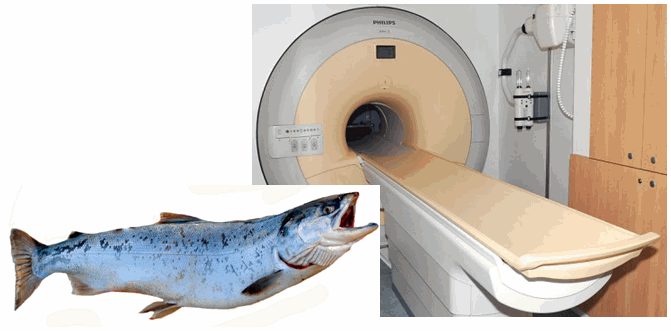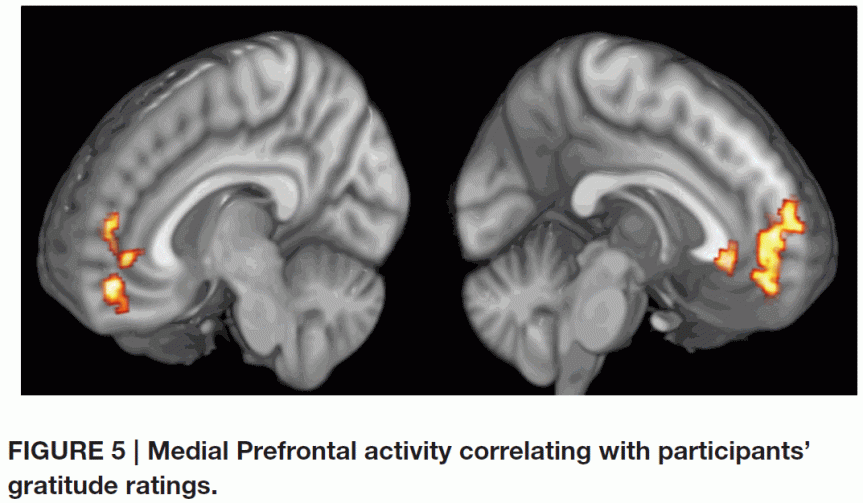
“Subject. One mature Atlantic Salmon (Salmo salar) participated in the fMRI study. The salmon was approximately 18 inches long, weighed 3.8 lbs, and was not alive at the time of scanning.
Task. The task administered to the salmon involved completing an open-ended mentalizing task. The salmon was shown a series of photographs depicting human individuals in social situations with a specified emotional valence. The salmon was asked to determine what emotion the individual in the photo must have been experiencing.”
Before explaining why you read what you just read and if it’s true (it is!), let me tell you that for many people, me included, the imaging studies seem very straightforward compared to, say, immunohistochemistry protocols. I mean, what do you have to do? You stick a human in a big scanner (fMRI, PET, or what-have-you), you start the image acquisition software and then some magic happens and you get pretty pictures of the human brain on your computer associated with some arbitrary numbers. Then you tell the humans to do something and you acquire more images which come with a different set of numbers. Finally, you compare the two sets of numbers and voila!: the neural correlates of whatever. Easy-peasy.
Well, it turns out it’s not so easy-peasy. Those numbers correspond to voxels, something like a pixel only 3D; a voxel is a small cube of brain (with the side of, say, 2 or 3 mm) comprising of hundreds of thousands to millions of brain cells. After this division, depending on your voxel size, you end up with a whooping 40,000 to 130,000 voxels or thereabouts for one brain. So a lot of numbers to compare.
When you do so many comparisons, by chance alone, you will find some that are significant. This is nature’s perverse way to show relationships where there are none and to screw-up a PhD. Those relationships are called false positives and the more comparisons you do, the more likely it is to find something statistically significant. So, in the ’90s, when the problem became very pervasive with the staggering amount of data generated by an fMRI scan, researchers came up with mathematical ways to dodge the problem, called multiple comparisons corrections (like application of the Gaussian Random Field Theory). Unfortunately, even 20 years later one could still find imaging studies with uncorrected results.
To show how important it is to perform that statistical correction, Bennet et al. (2010) did an fMRI study on perspective taking on one subject: a salmon. The subject was dead at the time of scanning. Now you can re-read the above excerpt from the Methods section.
Scroll down a bit to the Results section: “Out of a search volume of 8064 voxels a total of 16 voxels were significant”, p(uncorrected) < 0.001, showing that the salmon was engaging in active perspective-taking.
After the multiple comparisons correction, no voxel lit up, meaning that the salmon was not really imagining what the humans are feeling. Bummer…
The study has been extensively covered by media and I jumped on that wagon too – even if a bit late – because I never tire of this study as it’s absolutely funny and timeless. The authors even received the 2012 IgNobel prize for Neuroscience, as justly deserved. I refrained from fish puns because there are aplenty in the links I provided for you after the Reference. Feel free to come up with your own. Enjoy!
Reference: Bennett, CM, Baird AA, Miller MB & Wolford GL (2010). Neural correlates of interspecies perspective taking in the post-mortem Atlantic Salmon: An argument for multiple comparisons correction. Journal of Serendipitous Unexpected Results, 1, 1–5, presented as poster at the 2009 Human Brain Mapping conference. PDF | Nature cover | Neuroskeptic cover | Scientific American full story
By Neuronicus, 23 November 2015








